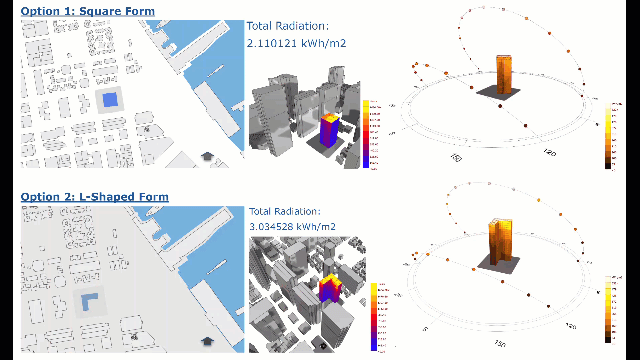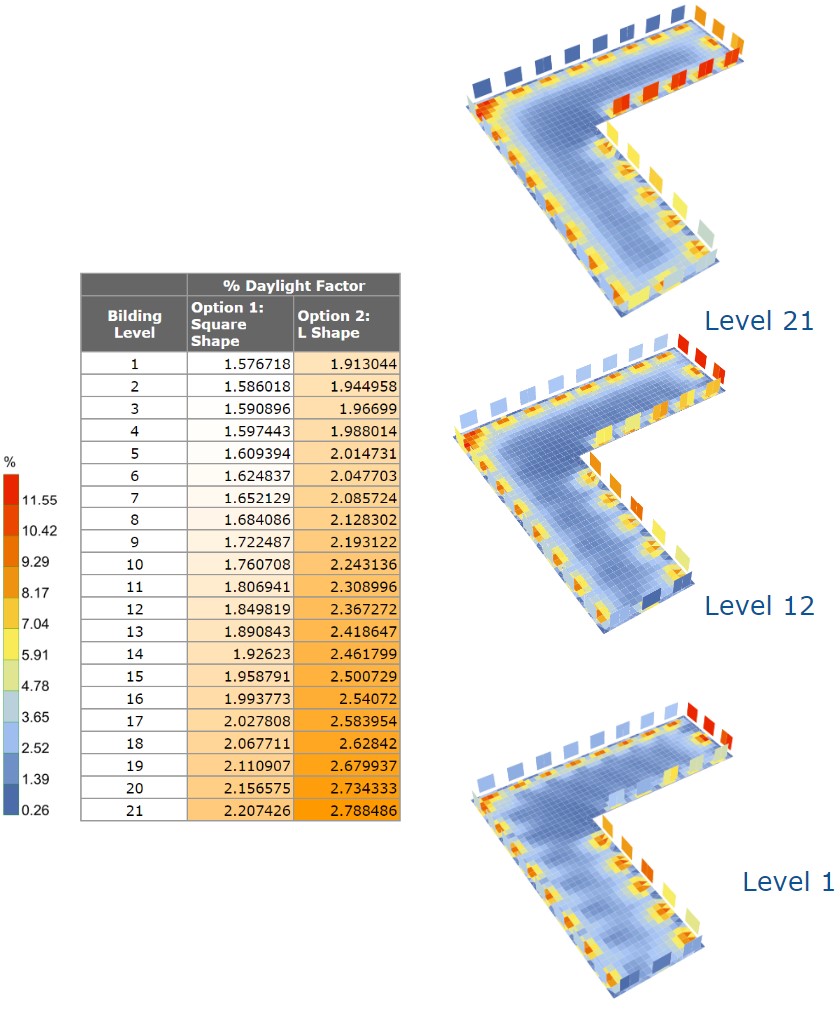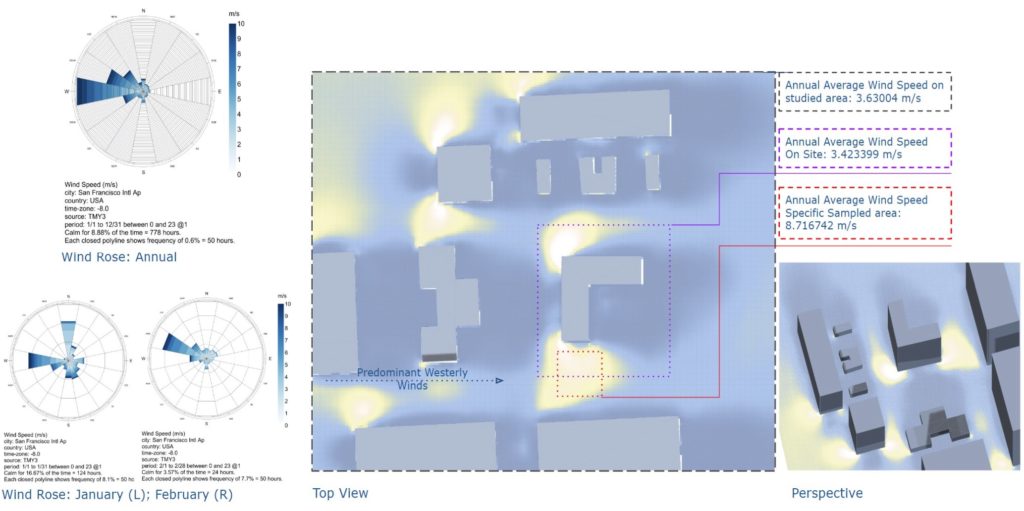Site & Location
This project is in San Francisco, California which is located on the west coast of the United States of America. The site is in downtown area on the north-west part of the city surrounded by high-rise buildings.

Climate Summary
San Francisco has mild temperate climate with the temperature typically in between 5 to 18 degree Celsius in colder months and hardly exceeds 30 degree Celsius ever. Mark Twain once quoted that the coldest winter he ever experienced was the summer in San Francisco. You can see in the image below that there are 3161 heating degree days from November to April, whereas cooling demand is 115 degree days for rest of the year.

Thermal Control
The annual periods are broken out in two seasons, Dry & Wet. Per annual Psychrometric chart below, the ambient temperature is often too low for user comfort. One way to improve this is to implement passive solar heating strategies.

Since there are many tall buildings around the selected site, two basic forms were studied. Option 1 is square & option 2 is L-shaped form. These were later tested using Galapagos to find the best possible location and orientation to maximize solar radiation for passive heating. The L-shaped form seems to be receiving more radiation than the other option.

Daylighting Study
The goal was to have have a daylighting factor of at least 2%. In option 1, because of the square shape form, the deeper interiors do not receive adequate daylight. The daylight factor we get here does not exceed 2% until you reach higher floor levels.


The narrower floor plan from option 2 seems to work better for daylighting. Although the lower floors still may not have adequate daylight, the floors starting from level 5 onwards have daylighting factor of 2 and above. Also, the amount of radiation received by different levels on same side varies owing to the surrounding tall buildings, this makes it difficult with a fixed shading strategy and automated shading devices may be considered.


Wind Study
Influence of the Pacific Coast can be seen on the wind pattern as the predominant winds are westerly throughout the year, with some northerly and north-westerly winds during the winter months. Per Infrared analysis below, the average speeds on the site are close to 4m/s. There are some spots on the north and south side of the building where the wind speeds exceed 8m/s. Using vegetation can be one of the strategies to tackle these windy spots.


